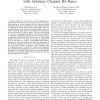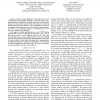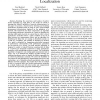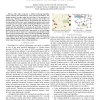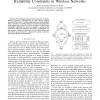INFOCOM
2009
IEEE
14 years 6 months ago
2009
IEEE
— We present muNet, a wireless mesh network design and implementation to harness the multiuser capacity of wireless channels. Traditionally, media access control is designed to s...
INFOCOM
2009
IEEE
14 years 6 months ago
2009
IEEE
—MAC layer random network coding (MRNC) was proposed in [1] as an alternative to HARQ for reliable data transmission in WiMAX unicast. It has been shown that MRNC achieves a high...
INFOCOM
2009
IEEE
14 years 6 months ago
2009
IEEE
Abstract—Mobile TV networks have received significant attention from the industry and academia, as they have already been deployed in several countries and their expected market...
INFOCOM
2009
IEEE
14 years 6 months ago
2009
IEEE
—Measurement of available bandwidth in a network has always been a topic of great interest. This knowledge can be applied to a wide variety of applications and can be instrumenta...
INFOCOM
2009
IEEE
14 years 6 months ago
2009
IEEE
—There has been significant recent interest in covert communication using timing channels. In network timing channels, information is leaked by controlling the time between tran...
INFOCOM
2009
IEEE
14 years 6 months ago
2009
IEEE
Abstract—Detecting the occurrence and location of performance anomalies (e.g., high jitter or loss events) is critical to ensuring the effective operation of network infrastructu...
INFOCOM
2009
IEEE
14 years 6 months ago
2009
IEEE
—We study throughput-optimal scheduling/routing over mobile ad-hoc networks with time-varying (fading) channels. Traditional back-pressure algorithms (based on the work by Tassiu...
INFOCOM
2009
IEEE
14 years 6 months ago
2009
IEEE
—As the service requirements of network applications shift from high throughput to high media quality, interactivity, and responsiveness, the definition of QoE (Quality of Exper...
INFOCOM
2009
IEEE
14 years 6 months ago
2009
IEEE
—This paper proposes a VIrtual Scanning Algorithm (VISA), tailored and optimized for road network surveillance. Our design uniquely leverages upon the facts that (i) the movement...
INFOCOM
2009
IEEE
14 years 6 months ago
2009
IEEE
Abstract—We investigate optimal resource allocation for delaylimited cooperative communication in time varying wireless networks. Motivated by real-time applications that have st...

